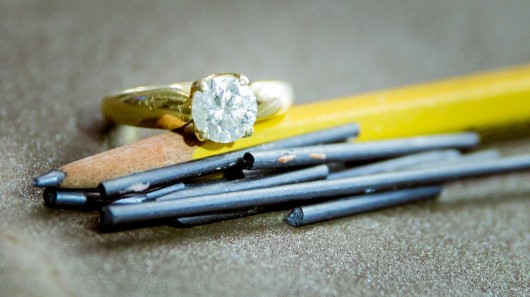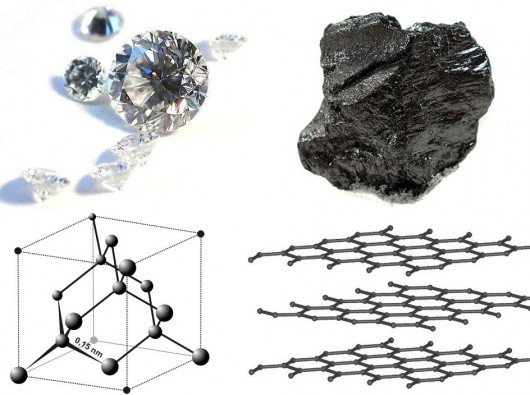
Scientists at Stanford University have found a way of creating artificial diamonds out of graphite without applying external pressure (Photo: Fabricio Sousa/SLAC)
Pressure makes diamonds, but according to recent findings, there may also be a much quicker, hassle-free way. A team of researchers at Stanford University has stumbled upon a new way of turning graphite (the material used for pencil leads) into a diamond-like carbon structure simply by applying hydrogen over a platinum substrate, without the need to apply external pressure of any kind. The discovery could lead to easier and more flexible manufacturing of diamonds used in cutting tools and other industrial devices.
The excellent hardness, mechanical strength and thermal conductivity of diamonds means they have a wide range of scientific and industrial applications. Their uses range from heat sinks that cool down electronic components to "anvil cells" used to synthesize specific materials.
Synthetic diamonds are normally built by taking graphite (the material used for pencil leads, which is simply a stack of graphene layers) and applying extremely high pressures, on the order of 150 thousand atmospheres. The immense forces exerted on the graphene sheets are enough to reconfigure their atomic structure into a much more stable, diamond-like form.
But now, a new method discovered by chance by a team of Stanford researchers could make diamond manufacturing much simpler and more flexible.
Diamond and graphite are both allotropes of carbon; their vastly different properties come down to the way the carbon atoms are arranged (Image: Materialscientist, used under CC 3.0 by-sa)
While originally setting out to find a way to make graphene usable in transistors, the team led by researcher Sarp Kaya added a few layers of graphene to a platinum substrate, and then exposed the top graphene layers to hydrogen. Instead of producing a high-performance replacement for silicon like the scientists had hoped, the process started a chain reaction that altered the structure of all the graphene layers into much harder diamond-like structures.
After taking a closer look, the researchers found that the introduction of hydrogen creates chemical bonds between the bottom layer of graphene and the platinum substrate. The ability of platinum to create such bonds with graphene is what keeps this diamond-like film stable.
By using this new method, scientists may be able to understand and control the transition between the many allotropes of carbon, turning one into another at will by manipulating factors such as the number of graphene layers and the material used as a substrate.
Next-up, the researchers will investigate the possible applications of hydrogenated few-layer graphene and determine whether the diamond-like films can also be grown on substrates other than platinum.
Source: Stanford University
Copyright © Gizmag 2003 - 2014
http://www.gizmag.com/graphite-synthetic-diamond-platinum-stanford/31496
